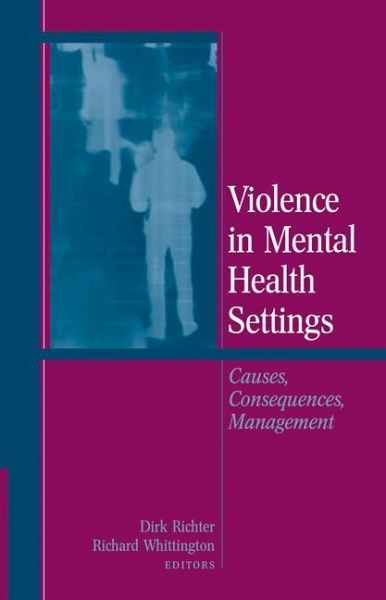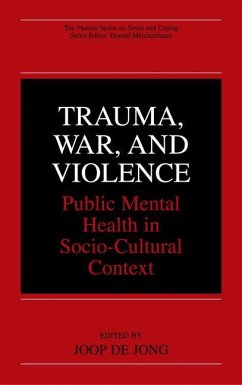
Violence in Mental Health Settings
Causes, Consequences, Management
Herausgegeben: Richter, Dirk; Whittington, Richard
Versandkostenfrei!
Versandfertig in 6-10 Tagen
76,99 €
inkl. MwSt.

PAYBACK Punkte
38 °P sammeln!
Despite great improvement in service delivery, patient violence remains a major problem at mental health facilities. Focusing equally on causes, management, and prevention, this groundbreaking book represents the state of knowledge on this crucial topic.Violence in Mental Health Settings brings together salient theories, valuable data, and real-world interventions in one accessible volume. The contributors include psychiatrists, nurses, researchers, and academics (many affiliated with the European Violence in Psychiatry Research Group), offering an integrative context for understanding patient...
Despite great improvement in service delivery, patient violence remains a major problem at mental health facilities. Focusing equally on causes, management, and prevention, this groundbreaking book represents the state of knowledge on this crucial topic.
Violence in Mental Health Settings brings together salient theories, valuable data, and real-world interventions in one accessible volume. The contributors include psychiatrists, nurses, researchers, and academics (many affiliated with the European Violence in Psychiatry Research Group), offering an integrative context for understanding patient aggression and identifying areas where research is lacking. Chapters review the latest theories of violence, proven prevention strategies, and examples of positive organizational change. Practical highlights include:
-Assessing and measuring risk: self- versus other-reporting scales
-How the ward environment can contribute to violence - or its prevention
-Best practice guidelines for verbal, physical, and pharmaceutical interventions
-Training issues and course development in violence management
-Professional coping after patient attacks
-Developing a non-violent culture at the institutional level
Throughout, the material is illustrated liberally with graphs and clinical case examples, and coverage bridges the patient-rights and zero-tolerance ends of the spectrum.
Therapists, nurses, social workers, and counselors in hospitals and other inpatient and community facilities will find Violence in Mental Health Settings a source of vital insights and ideas for future policy. Regardless of one's setting or specialty, the authors share a critical aim with their readers: a safer and more humane experience.
Violence in Mental Health Settings brings together salient theories, valuable data, and real-world interventions in one accessible volume. The contributors include psychiatrists, nurses, researchers, and academics (many affiliated with the European Violence in Psychiatry Research Group), offering an integrative context for understanding patient aggression and identifying areas where research is lacking. Chapters review the latest theories of violence, proven prevention strategies, and examples of positive organizational change. Practical highlights include:
-Assessing and measuring risk: self- versus other-reporting scales
-How the ward environment can contribute to violence - or its prevention
-Best practice guidelines for verbal, physical, and pharmaceutical interventions
-Training issues and course development in violence management
-Professional coping after patient attacks
-Developing a non-violent culture at the institutional level
Throughout, the material is illustrated liberally with graphs and clinical case examples, and coverage bridges the patient-rights and zero-tolerance ends of the spectrum.
Therapists, nurses, social workers, and counselors in hospitals and other inpatient and community facilities will find Violence in Mental Health Settings a source of vital insights and ideas for future policy. Regardless of one's setting or specialty, the authors share a critical aim with their readers: a safer and more humane experience.












